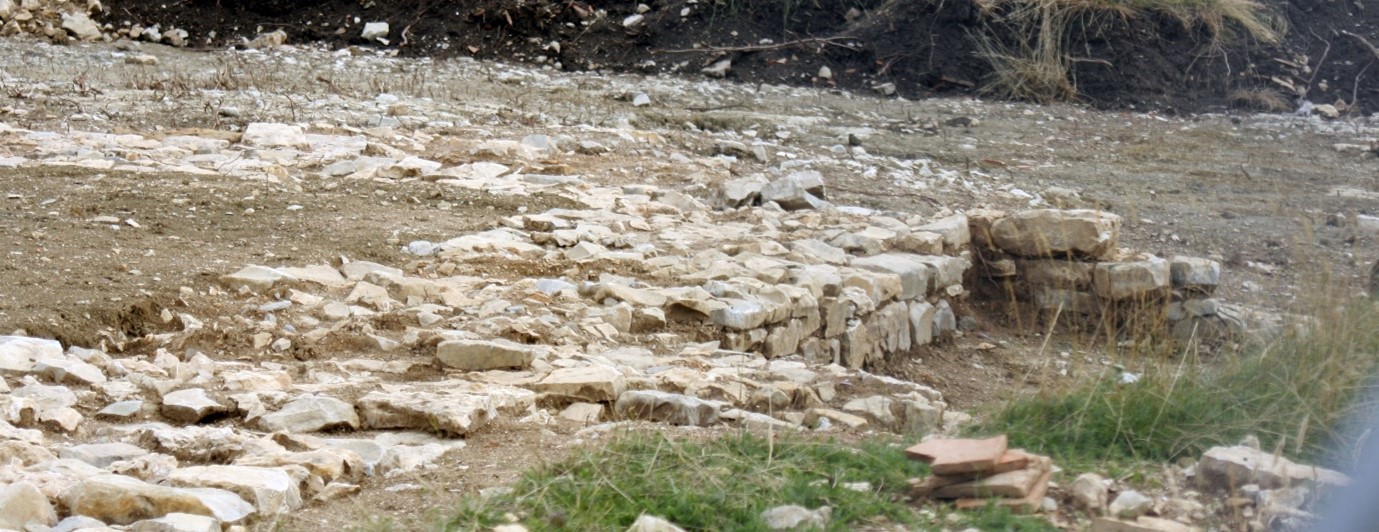They say time flies, but was it really 8 years ago in 2013 that Victor Hodges House was demolished, along with Southam Library, to build Tithe Lodge and Tithe Place? At that time a comprehensive archaeological dig took place, and the medieval foundations of Southam’s Tithe Barn were discovered. This was a very large structure, built of local limestone, with walls a metre thick and would have been used to store the tithes due to Coventry Priory.
A tithe was one tenth of annual produce or earnings, formerly taken as a tax for the support of the Church and clergy. In the case of Southam, because Lady Godiva’s husband had given Southam as a whole town to the Benedictine Monastery of Coventry in the 11th Century, a tenth of everything produced in Southam was sent to Coventry. That ceased when Henry VIII took the life blood of monasteries away from them between 1536 and 1541, and gave settlements like Southam to his favoured men.
If you want to see what those Tithe Barn walls may have looked like, then take a close look at one of our oldest buildings, the Olde Mint, and also take a low level look around the town centre and you will see many surviving chunks of original stone walls. The blue lias limestone quarried around Southam made good strong building material that would hold up tiled roofs and outlive the softer wattle and daub topped with thatch. Some interior stone walls still show beautiful fossils in them. I have found many such stones with fossils in old cattle sheds around Ladbroke where I live.
There is archaeological evidence of very early settlement under and around Southam, going back to early Iron Age and as more research is done, more Romano-British (800 BCE– 409 CE) evidence is being discovered. There is a cluster of anomalies south of the town, between Banbury Road and Kineton Road, and a wide deep Roman ditch ran parallel to the old Tithe Barn walls off Park Lane. The ditch was overlain with a newer limestone wall that indicates rebuilding on top of old features over the centuries, and shows that it was visible when the Tithe Barn was built.
With so much house building going on around Southam, there has been an influx of archaeological work around the town and there is more to come on the hinterland with HS2 construction right on our doorstep. Further Iron Age and Romano-British remains have been unearthed around the north-east boundary. These include a crouched burial possibly Iron Age, and remains of a roundhouse and other structures. Pottery dates these features to the late Iron Age/early Roman ‘transitional’ period.
In the same area, a complex ditch system was dated to later Roman, the 2nd or 3rd centuries CE and included a cluster of small enclosures and trackways. There was also evidence of continued activity on the same site, with four Anglo-Saxon burials dated by glass and amber beads to the 6th/7th century. With medieval ridge and furrow over the top, it shows evidence that settlement has been continuous in and around Southam for a very long time.
The photograph shows detail of Southam’s Tithe Barn’s foundations, built of local limestone. Tithe Lodge and Tithe Place were named after this ancient structure which now lies buried beneath the building in Little Park, opposite the Churchyard. If you are interested in finding out more about local history, contact Southam Heritage Collection. Please see our website for where to find us and our current opening times. Contact: 01926 613503 email southamheritage@hotmail.com visit our website www.southamheritage.org and find us on Facebook: Southam Heritage Collection.


Leave A Comment